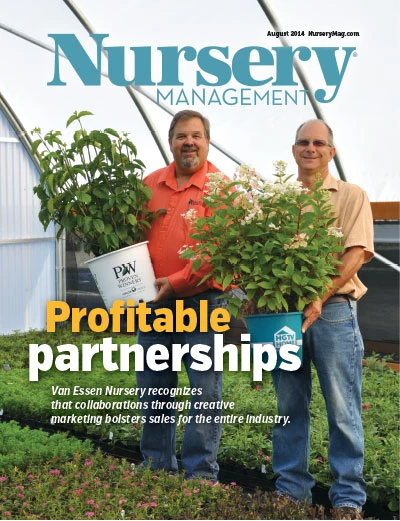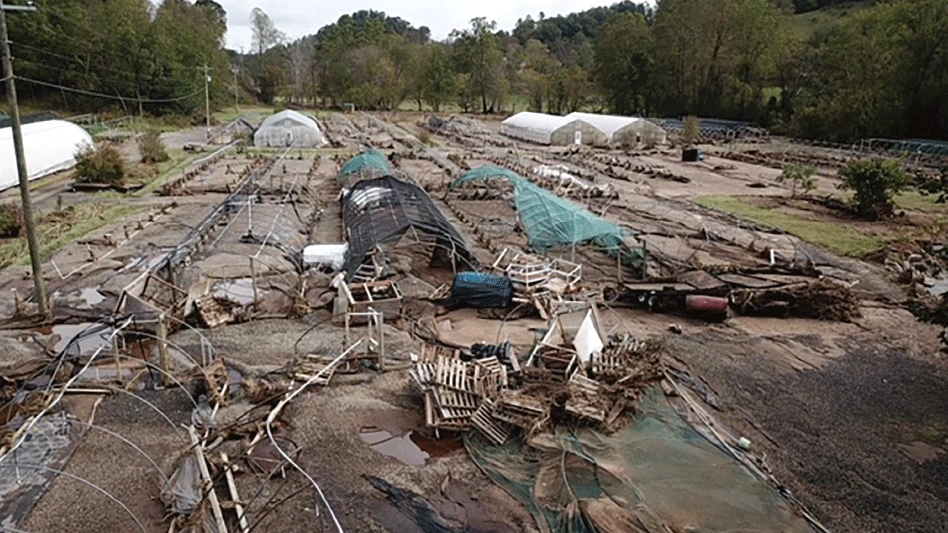 Compiled by reports from Juli R. Gould, USDA APHIS PPQ CPHST Laboratory; Leah S. Bauer, USDA Forest Service, Northern Research Station; Jonathan Lelito, USDA-APHIS-PPQ Biocontrol Rearing Facility; and Jian Duan, USDA ARS Beneficial Insects Introduction Research Unit
Compiled by reports from Juli R. Gould, USDA APHIS PPQ CPHST Laboratory; Leah S. Bauer, USDA Forest Service, Northern Research Station; Jonathan Lelito, USDA-APHIS-PPQ Biocontrol Rearing Facility; and Jian Duan, USDA ARS Beneficial Insects Introduction Research Unit
Shortly after the emerald ash borer (EAB) was discovered in North America in 2002, federal and state regulatory agencies placed infested counties under quarantine and eradication activities were initiated. Due to the magnitude of the EAB infestation in North America, the potential for natural and artificial dispersal of EAB, limited EAB detection and control methods, and high costs, program objectives shifted away from eradication to containment and management of the pest. At present, the most promising long-term approach for reducing EAB populations and conserving ash in forested areas of North America is biological control.
The costs of EAB
Ash is one of the most popular landscape trees because of its tolerance of a range of environmental conditions and resistance to other pests. The estimated cost of treating, removing, and replacing 37.9 million ash trees in urban and residential settings in 25 states is $25 billion. Nationwide, the nursery industry produced an estimated 2 million ash trees each year. With median approximate values ranging from $50 to $70 per tree, the annual ash nursery stock was worth between $100 and $140 million. On average, federal and state resource managers spend $29.5 million per year to manage EAB populations.
The hunt for biocontrols
Because EAB is from northeast Asia, U.S. and Chinese scientists have been searching for EAB and its natural enemies in that region since 2003. In Asia, EAB population densities are relatively low due to the combined effects of EAB-resistance in Asian ash species, scarcity and patchiness of forests, and the EAB natural enemy complex. Exploration for EAB natural enemies in China by USDA and Chinese researchers yielded several hymenopteran parasitoids. Three of these parasitoids have been approved for release as biological control agents of EAB in the U.S.
 In southeast Michigan, less than 1 percent EAB larval parasitism was found by researchers surveying for potential natural enemies of EAB in 2003 and 2004. Parasitoid species reared from approximately 3,000 EAB larvae included several native hymenopteran species: Phasgonophora sulcata (Chalcididae), Spathius floridanus (Braconidae), Atanycolus spp. (Braconidae), and one exotic parasitoid Balcha indica (Hymenoptera: Eupelmidae). No native egg parasitoids have been reared from EAB eggs. More recently, Atanycolus spp. were found parasitizing up to approximately 70 percent EAB larvae locally in Michigan, but overall populations of EAB are not controlled by native natural enemies. The development of a biological control program for EAB management using non-native parasitoids continues to progress because parasitism of EAB in the U.S. is low compared to that reported for our native Agrilus spp. and for EAB in China.
In southeast Michigan, less than 1 percent EAB larval parasitism was found by researchers surveying for potential natural enemies of EAB in 2003 and 2004. Parasitoid species reared from approximately 3,000 EAB larvae included several native hymenopteran species: Phasgonophora sulcata (Chalcididae), Spathius floridanus (Braconidae), Atanycolus spp. (Braconidae), and one exotic parasitoid Balcha indica (Hymenoptera: Eupelmidae). No native egg parasitoids have been reared from EAB eggs. More recently, Atanycolus spp. were found parasitizing up to approximately 70 percent EAB larvae locally in Michigan, but overall populations of EAB are not controlled by native natural enemies. The development of a biological control program for EAB management using non-native parasitoids continues to progress because parasitism of EAB in the U.S. is low compared to that reported for our native Agrilus spp. and for EAB in China.
Oobius agrili parasitizes up to 60 percent of EAB eggs laid during the summer in some areas of China. Tiny female Oobius accomplish this by searching the bark of ash trees for EAB eggs, which are laid in bark crevices and between layers of bark. When Oobius finds an EAB egg, it injects its own egg inside where it will hatch, grow, and kill the host egg. An Oobius adult will emerge and repeat the cycle for at least two generations during the EAB egg-laying season. Each Oobius adult parasitizes an average of about 80 EAB eggs during its lifetime. Oobius spend the winter as larvae inside EAB eggs and emerge as adults the following spring.
Spathius agrili parasitizes up to 90 percent of EAB larvae in ash trees in some parts of China. Female Spathius parasitize EAB larvae by drilling through the bark and laying an average of eight eggs on the outside of its host. The hatching parasitoid larvae feed and develop on the EAB larva, causing its death. The cycle is repeated one to two times each summer and fall depending on climate. Spathius overwinter as larvae or pupae in the host gallery. Mature larvae spin silken cocoons in which they pupate and emerge as adults during the summer.
Tetrastichus planipennisi is another larval parasitoid of EAB from China, where it attacks and parasitizes up to 50 percent of EAB larvae in some areas. The life cycle of Tetrastichus is similar to that of Spathius, however, the female parasitoid lays eggs inside EAB larvae where the parasitoid larvae grow, eventually killing their host. Tetrastichus completes several generations each year, and one EAB larva can produce more than 130 Tetrastichus adults. They survive the winter as larvae inside their host or host gallery under the bark of ash trees.
Rearing EAB parasitoids
The USDA APHIS PPQ Biological Control Production Facility in Brighton, Mich., was designed to produce EAB parasitoids for field release. These small parasitic wasps must be reared in EAB eggs or larvae, which are produced or harvested from bolts of ash trees felled in nearby woodlots. Although the parasitoids are reared and stockpiled throughout the year for release during the field season, the rearing methods are time and labor intensive. At the present time, production of EAB eggs and larvae limits the number of parasitoids that can be produced. Thus, demand for biological control agents may exceed production for the foreseeable future.
In January 2009, a Biological Control Production Facility became operational in Brighton, Mich. As of February 2013, this facility has reared and released more than 720,000 EAB parasitoids in 14 states. These releases will continue while scientists continue to study the establishment, dispersal, and impact these natural enemies have on suppressing EAB populations and the recovery of ash trees. Scientists will also continue to explore the U.S. and Asia for additional EAB natural enemies for possible use in the EAB biological control program. Most recently, a new species of Spathius was discovered attacking EAB larvae in
Korea and Russia, where the climate is different than in Tianjin, China, where S. agrili was collected. Host specificity testing is complete for Spathius galinae, and an application for a release permit has been submitted.
For more information on these parasitoids, or to find out how to be part of the release program, visit www.aphis.usda.gov/permits/learn_epermits.shtml.
Juli R. Gould, is an entomologist at USDA APHIS PPQ CPHST Laboratory, Juli.R.Gould@aphis.usda.gov; Leah S. Bauer is a research entomologist at the USDA Forest Service, Northern Research Station, lbauer@fs.fed.us; Jonathan Lelito, is facility manager at USDA-APHIS-PPQ Biocontrol Rearing Facility, Jonathan.Lelito@aphis.usda.gov; Jian Duan is a research entomologist at USDA ARS Beneficial Insects Introduction Research Unit, Jian.Duan@ars.usda.gov.

Explore the August 2014 Issue
Check out more from this issue and find your next story to read.
Latest from Nursery Management
- Hold the line!
- Meet the All-America Selections AAS winners for 2025
- Exacto announces David Hollinrake as CEO
- AmericanHort accepting applications for HortScholars program at Cultivate'25
- BioWorks hires Curt Granger as business development manager for specialty agriculture
- 2025 Farwest Show booth applications now open
- Applications open for Horticultural Research Institute Leadership Academy Class of 2026
- Just one shot






